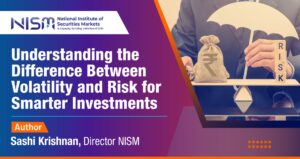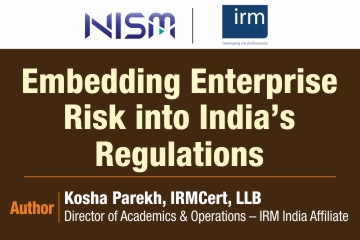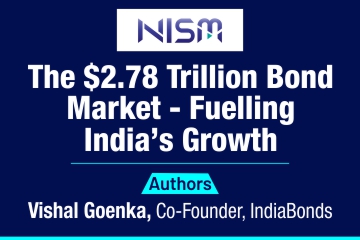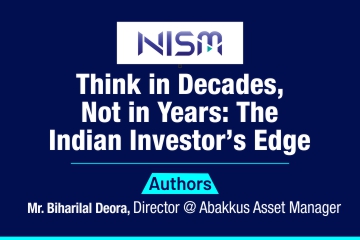
Volatility ≠ Risk.
Investor in the securities market face a perplexing challenge: distinguishing between marketvolatility and investment risk. Mutual funds, for instance, are required to make a disclaimer that “Mutual Fund investments are subject to market risks. The NAV of the scheme may go up and down depending on factors and forces affecting the securities market.”
The terms “risk” and ‘volatility” are frequently used interchangeably, but in reality they represent two fundamentally different concepts. Volatility is the measure of price fluctuations, a statistical measure of how much an assets value deviates from its average. Risk, on the other hand, is the probability of a permanent loss of capital. Understanding the distinction between the two will be the cornerstone of a successful long term investment strategy.
Volatility is a natural and inevitable characteristic of any liquid market. The volatility of an asset is measured by the standard deviation of the asset. A large standard deviation for a stock or a mutual fund scheme NAV means that the price swings wildly, both on the upside and the downside. But that does not necessarily mean that you will lose money on your investment.
Risk, by contrast, is the potential for your investment to fail to meet your financial goal. Staying invested in a company whose fundamentals are deteriorating or a mutual fund scheme that is perpetually underperforming its benchmark could lead to a permanent decline in the value of your investment.
The last 10-years have seen fairly large volatility in the Indian equity markets. There was extreme volatility in the equity markets during the pandemic years between 2019 and 2021 and the average India VIX (which measures volatility in the Indian equity markets) reached levels of 25% in 2019-20. But in spite of volatility, as measured by the India VIX, averaging over 15% in the 2015-2025 period, the 10 year CAGR for the Nifty 50 was close to 11%. Extreme volatility did not lead to permanent losses for those who stayed invested.
| Year | NSE Nifty 50 year end value | NSE Nifty 50 year end value |
|---|---|---|
| 2014-15 | 8491.00 | 13.0 |
| 2015-16 | 7738.40 | 16.8 |
| 2016-17 | 9173.75 | 11.1 |
| 2017-18 | 10113.70 | 13.5 |
| 2018-19 | 11623.96 | 15.3 |
| 2019-20 | 8597.75 | 24.9 |
| 2020-21 | 14690.70 | 18.1 |
| 2021-22 | 17464.75 | 17.2 |
| 2022-23 | 17359.75 | 13.8 |
| 2023-24 | 22326.90 | 12.5 |
| 2024-25 | 23519.35 | 11.9 |
| 10 year CAGR/Average VIX | 10.73% | 15.3 |
Another often misunderstood measure of volatility is Beta. Beta is the volatility relative to the market. A stock or a mutual fund portfolio with Beta > 1 is more volatile than the market and a stock or mutual fund portfolio with Beta < 1 is less volatile than the market. Often investors have a misconception that high Beta stocks or mutual fund schemes are riskier due to their wider price swings relative to the market. However, in the long run, these stocks or portfolios have the potential to deliver higher returns. A low Beta stock or mutual fund portfolio, while seeming safer, may not participate in market rallies and could underperform over the long run. In fact, low volatility, which
many investors seek, can be a double edged sword as it may indicate the lack of significant drivers. The true risk lies in factors like poor corporate governance, unsustainable debt or the changing competitive landscape and not in the volatility of the stock price.
Confusing volatility with risk often leads investors to make emotional decisions such as selling during market downturns. Investors need to understand that volatility is merely a measure of price movement and that volatility is not the same as risk.
Author: Mr. Sashi Krishnan, Director NISM

When people hear the term “risk management,” they often associate it with financial markets, insurance, or corporate governance. In…

As India charts its course towards Viksit Bharat, by 2047, the sophistication and depth of its financial markets are paramount.…

As investors, we often judge performance on monthly (MoM), Quarterly (QoQ) and year-on-year (YoY) statistics. It feels natural to look…
© 2025 National Institute of Securities Markets (NISM). All rights reserved.